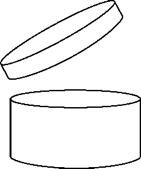Most companies do not state if a product is stable or how long it will last either opened or unopened, with the exception of OTC products, which are expiration dated if they do not last more than three years. However, international cosmetic and/or cosmeceutical companies marketing in the EU are required to put an expiration date on products if they do not last for at least 30 months. Most recently, the EU has instituted in law that companies must now include an icon of an open jar with the number of months that the product is good for after it has been opened (Fig. 2). The latter is the best way for the consumer and skin care professionals to determine how stable a product may be. Although this regulation has become effective as of March 2005, it will eventually appear on domestic products manufactured by international marketing companies. With the exception of waiting for this system to come into practice in the U. S., the only other way to determine the stability of a product not expiration dated would be to call the manufacturer directly and ask.
36M on or near the open jar icon (below) would represent the number of months that a product is stable (in this case, 36 months or three years) after it has been opened. This number and icon must be present on both the product container as well as the box (if applicable) that it is sold in. At this time there is no standard for testing or minimal
|
Figure 2 Example of period after opening (PAO) icon. |
requirements that a product most be stable for in order to be marketed; however, it is expected that guidelines will follow shortly.
With the age of computers and Internet access, the best and easiest way to evaluate the efficacy of a product is to run a simple Internet search using an engine similar to Google (http://www. google. com). More advance searches may be conducted using various databases like PubMed (http://www. ncbi. nlm. nih. gov/entrez/query. fcgi? DB = pubmed). The latter will be more specific; however, remember that not all manufacturers publish data in peer-reviewed scientific journals. Short of running your own database searches, the only other way to obtain this information is to call manufacturers directly and request copies of any data they have on file.

